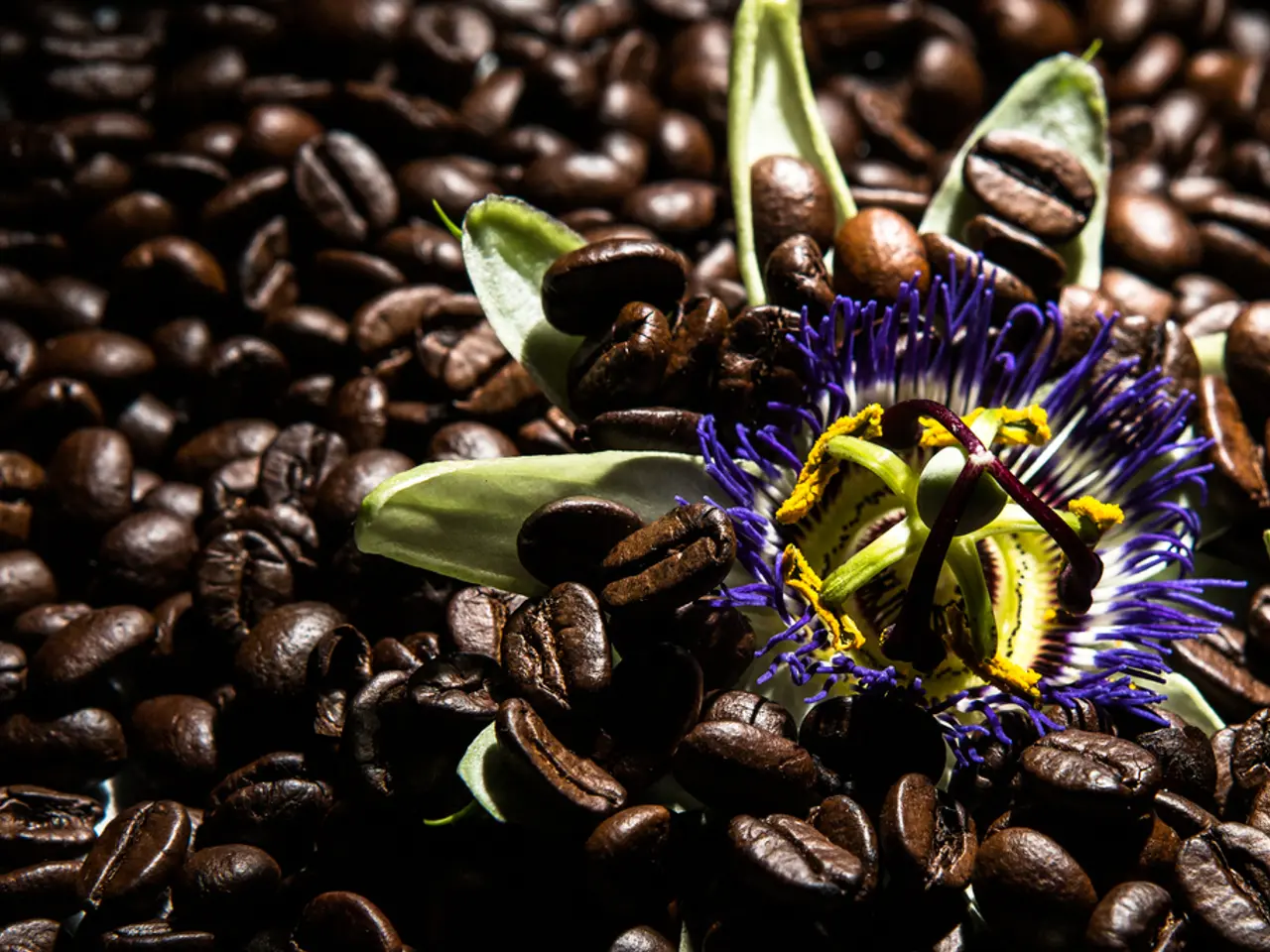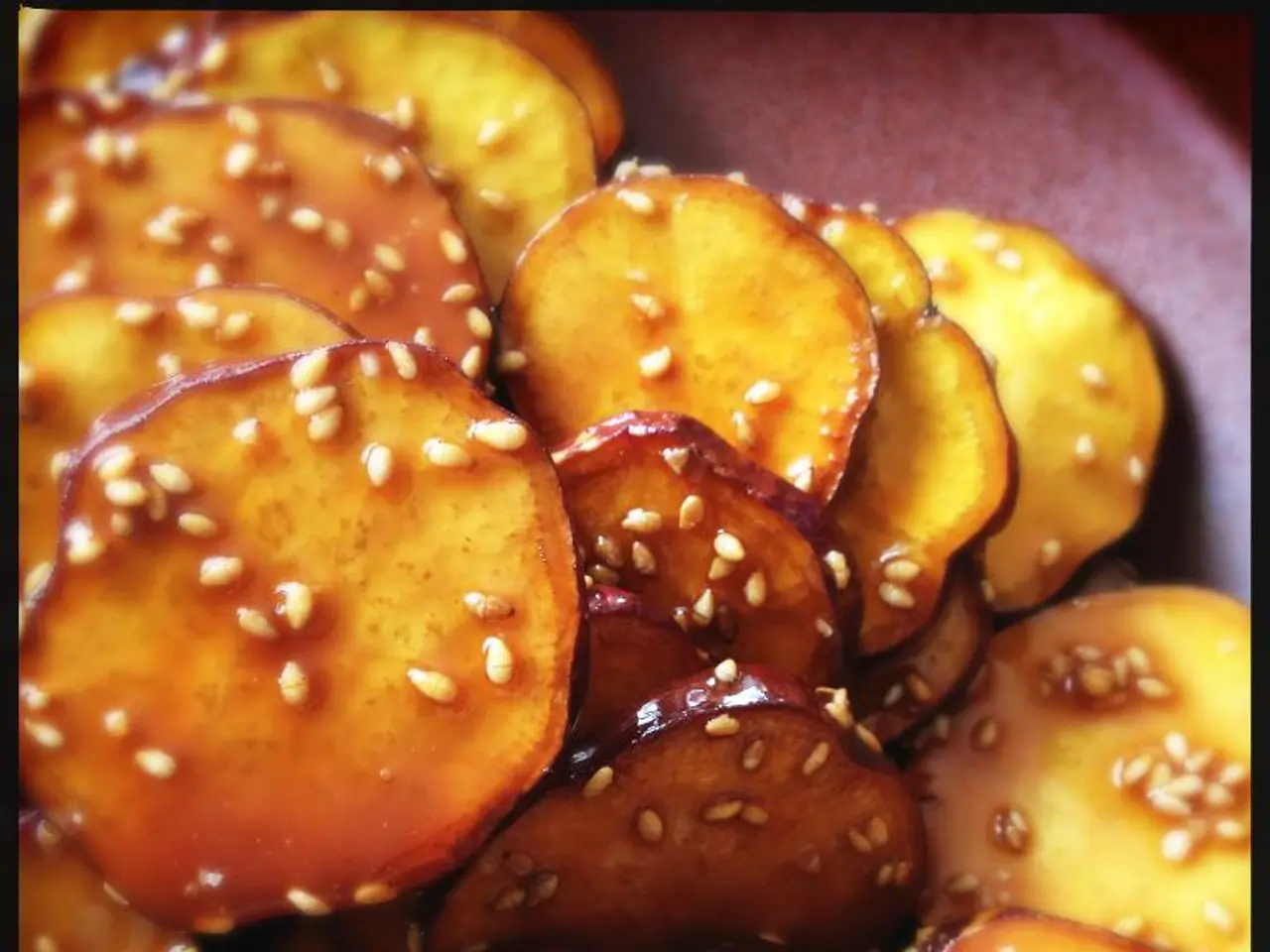Method for Preserving and Storing Scarlet Runner Beans
In the world of gardening, saving seeds from your own crops can be a rewarding and cost-effective practice. Here's a step-by-step guide to help you ensure successful future harvests.
**1. Choosing the Right Plants and Seeds** Select healthy, robust plants with desirable traits for seed saving, ideally open-pollinated or heirloom varieties. These plants reliably produce offspring similar to the parent plant. Avoid saving seeds from hybrids unless you have experience, as they may not breed true or could be sterile. For biennial plants, you may need to overwinter them and harvest seeds in the second year.
**2. Allowing Seeds to Fully Mature** Let seeds ripen fully on the plant before harvesting. For many vegetables, this means letting pods or fruits dry and change colour. For example, beans and peas should dry on the vine, while tomatoes should overripe and ferment seed pulp for a few days. Avoid using seeds from store-bought produce unless fully ripened, as immature seeds may fail to germinate.
**3. Cleaning and Drying Seeds Properly** Clean seeds by removing pulp, and for tomatoes, fermenting pulp helps separate seeds and reduce diseases. Dry seeds thoroughly in a cool, shaded area on paper or mesh for about 5–7 days depending on humidity. Seeds must be completely dry before storage to avoid mold or rot. For some seeds like cilantro, drying seed heads in a warm, dry place is necessary before collecting seeds.
**4. Labeling Seeds Clearly** Always label seeds with the plant variety and the date you collected them. This helps keep track of seed viability and ensures you know what you are planting next season.
**5. Storing Seeds in Proper Containers** Use airtight containers such as glass jars, zip-lock bags, or paper seed envelopes. Adding silica gel packets or dry rice can help absorb residual moisture to keep seeds dry. Some gardeners add charcoal powder to containers to deter insects.
**6. Storing Seeds in Cool, Dry, Dark Conditions** Store seeds in a sealed container in a cool, dry place. Refrigerating seeds can extend their viability, but avoid freezing unless you know the seed’s tolerance. An alternative traditional storage method is keeping seeds in earthen pots to maintain stable humidity conditions. Avoid exposure to heat, sunlight, or dampness which reduce germination rates.
**7. Considering Seed Longevity** Most vegetable seeds maintain good viability for about one year; some seeds like peas or beans may last longer if stored well. After one year, germination rates decline, so replenish seed stocks regularly.
By following these steps, gardeners can build a reliable seed bank and maintain crop quality year after year. For more information, related articles are available for further reading. In addition, various gardening products such as the Jora JK270 Composter, Premium Drinking Water Safe Garden Hose, 6 feet by 3 feet patio garden shed, VegTrug Raised Garden Planter, Worm Factory 360 Composter, Deer Proof Cedar Complete Raised Garden Bed Kit, and Natural Cedar Raised Garden Beds in various sizes and shapes are available to help cultivate your garden. Wildflower Farms also offers an Eco-Lawn Grass Seed in a 5-pound size, and Farmstead Raised Garden Beds are another option to consider.
Embracing sustainable living, one can adopt home-and-garden practices like saving seeds from one's own crops for cost-effective and rewarding future harvests. By choosing healthy, robust plants with desirable traits, allowing seeds to fully mature, cleaning and drying seeds properly, labeling seeds clearly, storing seeds in proper containers, storing seeds in cool, dry, dark conditions, considering seed longevity, and utilizing gardening products such as garden sheds, planters, and composters, gardeners can build a reliable seed bank and maintain crop quality year after year.




